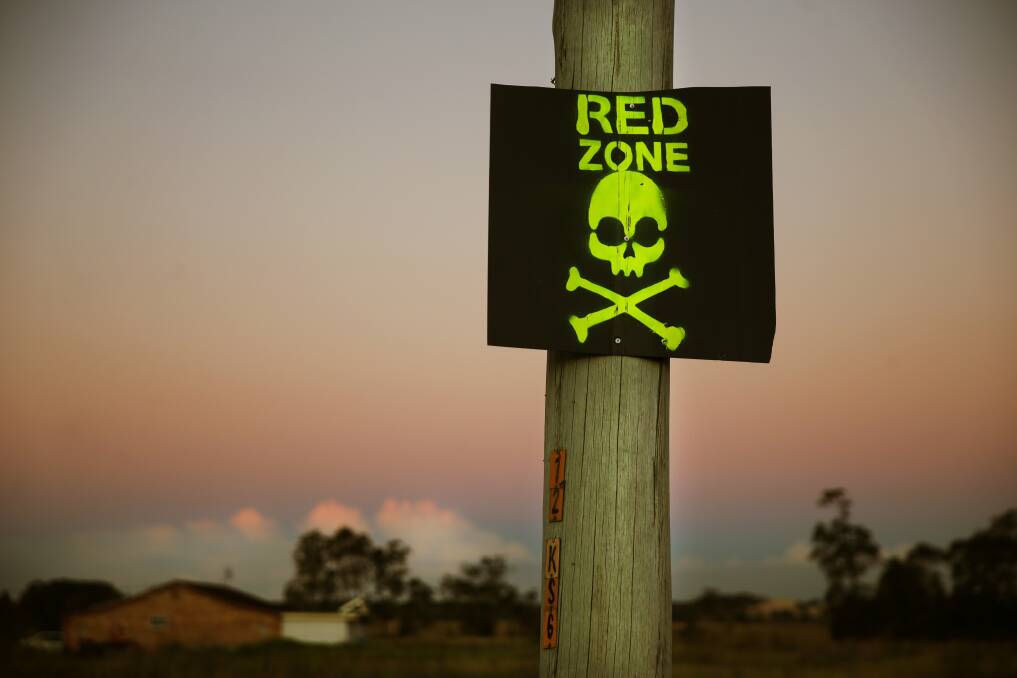
Port Stephens residents continue to be frustrated by the threat of potential health risks, the lack of a coordinated approach between state and federal governments and the uncertainty of compensation or a buy back of land in the Williamtown ‘red zone’.
Subscribe now for unlimited access.
or signup to continue reading
These were some of the concerns revealed in a Port Stephens Council report tendered to the Joint Standing Committee inquiry into the management of per- and polyfluoroalkyl substances (PFAS) contamination in and around the Williamtown RAAF Base.
The council submission was presented to the Williamtown public hearing on July 24 by general manager Wayne Wallis and presented to the councillors at the Tuesday meeting.
The inquiry, chaired by Andrew Laming MP, was set up in May this year to examine the progress of the Commonwealth Government’s response to, and management of, PFAS contamination.
One of the major issues concerned the potential health risks to residents and council staff involved in the maintenance of open drains outside the base site.
“The type of maintenance work carried out by council could include the removal of vegetation and sediments,” the report stated.
“Prior to any open drain maintenance works council undertakes testing of the sediments, the water and the embankment. If there is an unsafe presence of PFAS the soil/vegetation is removed and disposed of at licenced landfills.
“To date, this has not shown any unsafe detectable PFAS.”
The report stated there continued to be significant concern, frustration and anger with the community… “and there remains a great deal of uncertainty in relation to compensation and/or buy back of land affected by contamination”.
In relation to the water testing program in broader terms, council observed that it had been “slow, confusing and complicated”.
“These concerns have made it difficult for the community to understand what is required in regard to the testing and what the likely impacts on their properties and health may be. Some have said this could prove to be the most catastrophic event to occur in their lives.”
The council submission reported that community angst continued to reign due to there being no clear guidance at the outset of the investigation program as to what constituted contamination and the related health effects.
It also claimed that the consultation and coordination between relevant government agencies and stakeholders had been “disjointed and cumbersome” in places.
“It appeared as though the community was confused as to who does what … and there were too many players, too many sub-committees and no clear defined leadership.”
The council’s observation of the health advice and testing was that it had been slow and not clearly rolled out and many residents could not understand why there had been a delay to the implementation of broad scale blood testing.
The council has called for the appointment of a coordinated, staffed body which is seen to be independent of government. It has also called on the Commonwealth to continue scientific work and to provide information to the community in plain language on environmental and human health standards.
A council survey of 3000 businesses and property owners in the investigation area revealed that more than 50 per cent indicated they have been impacted by PFAS contamination.
PFAS inquiry chair Andrew Laming said that public hearings were continuing, with recommendations to be tabled in the committee’s report.
Defence has been approached for a comment.
Related reading:
- May 2018: Proposal for PFAS rate relief
- May 2018: PFAS contamination parliamentary inquiry calls for submissions
- May 2018: Williamtown torn between development opportunity and sorrow
- June 2018: NSW can’t ban toxic PFAS chemicals, says Environment Minister
- July 2018: Labor promises ban on PFAS chemicals if its wins state election
- July 2018: Living in the red zone is like ‘playing Russian Roulette’ with lives
- July 2018: Defence admits it can’t stop toxic chemicals running off RAAF base

